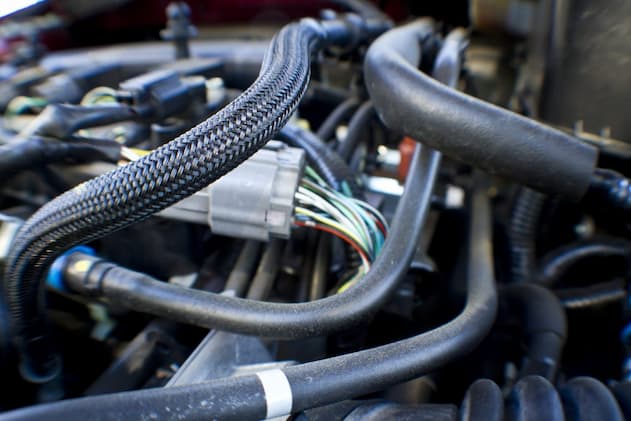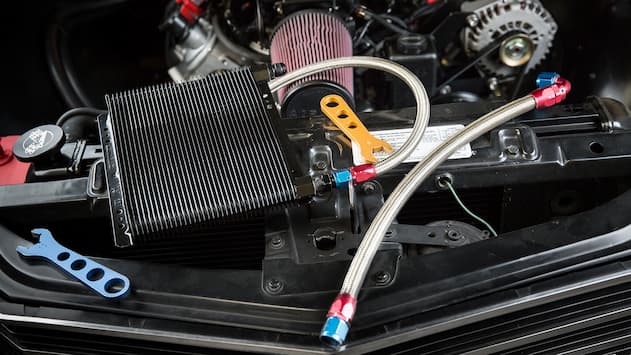Cooling Solutions for the Aussie Outback: Keeping Your Vehicle Running Strong in Extreme Heat
It’s no secret that Oz has some of the toughest, and most punishing conditions on the planet for cars and trucks. And in a land where engine temperatures can regularly crawl above 130°C, staying cool isn’t just a clever maxim that you can afford to take lightly, especially if you drive a small displacement turbo.
Heat, whether it’s in the form of searing ambient temperatures, or thermal-induced fatigue, can take a major toll on even the best-built engines; and the cost of not keeping engine temperatures under control can vary from dizzying drops in combustion efficiency to the cooking, and ultimate failure of engine internals. That’s why it’s so important to keep your engine as cool as possible all year round; and fortunately; there are a number of ideal, Australian-made solutions available to help you do that.
Reeling in High Temperatures With Heavy-Duty Cooling Components

Here’s a fact: Although radiators and cooling fans do a fantastic job of protecting your vehicle from the heat, sometimes they need help. Vicious off-roading sessions and long summer drives towing heavy trailers can send engine temperatures through the roof, making a select group of high-capacity, heavy-duty car cooling components absolutely essential hot weather protection for your powerplant.
Aftermarket air-to-air intercoolers and auxiliary engine oil coolers are the hands-down favourites when it comes to removing unwanted heat directly from an engine’s air intake and liquid lubricating systems. These heat-exchanging car cooling systems are designed specifically to reduce temperatures through radiation, and feature a host of non-heat-inducing benefits that include:
- High flow/low impact. Unlike exotic heat rejection and water injection systems, these uncomplicated aftermarket auto-cooling components utilize only the air that’s available at atmospheric pressure to siphon off the heat and rein in and stabilize raging engine temperatures.
- Easy installation. Straightforward, inline integration makes it possible for these components to take advantage of your vehicle’s factory undertray and venting; and they install with basic shop tools, require only minimal drilling, and don’t demand any special technical or mechanical expertise.
- No-load operation. While an auxiliary oil cooler typically requires that slightly more oil be added to an engine’s sump, these components don’t place any wasteful burden on either the engine or electrical system, ensuring that whatever power advantages they afford go directly to the engine.
Make no mistake: The key to optimal engine cooling is maximizing airflow. There’s no high-tech substitute for it, and together with your engine’s standard coolant radiator and cooling fans, heavy-duty intercoolers and auxiliary engine oil coolers round out a perfect automotive cooling combination that can keep temperatures manageable under even the most gruelling conditions.
Intercoolers Keep Incoming Air Charge Temperatures Low
In spite of their rather high-tech-sounding name, intercoolers are simply radiators that cool compressed, turbocharged or supercharged air before it’s forced into an engine’s intake manifold. These surprisingly basic air-to-air heat exchangers may not seem particularly impressive from their description – and certainly no more exciting than a ram-air induction car cooling system – but depending on the thickness of the unit’s core and fins, they’re capable of reducing intake air temperatures by 40% or more. That’s cool, high-pressure, power-producing air being fed straight into your engine.
The construction of an intercooler makes all the difference in its cooling capacity and ability to withstand massive boost loads though, and with a premium quality intercooler, you can expect a build that includes:
- Cast aluminium, TIG-welded air tanks;
- Internal core tubing built to reduce internal pressure drops;
- Multi-louvered, 6mm external cooling fins;
- Close tube-to-fin contact for better heat dissipation; and,
- Internal fins inside the cooling tubes.
The fact that intercoolers are standard equipment on everything from Ford’s tough PX-series ute lineup to Mercedes’ top-of-the-line AMG, and A / CLA / GLA turbos illustrates just how well they work, along with how well received they are by the aftermarket. There are even special aftermarket air-to-liquid intercoolers with their own high volume water pump and coolant reservoir, that are designed to first transfer the intake charge’s heat into water, and then away from the engine.
Oil Coolers Make Sure Internal Operating Temperatures Stay Optimal

While intercoolers are used almost exclusively on engines with forced induction, auxiliary engine oil coolers are a car’s cooling system that any vehicle can benefit from. Auxiliary oil coolers utilize the airflow across their finned surfaces to transfer heat that’s been absorbed by the oil circulating through the engine. Auxiliary coolers also necessitate the use of more oil in your vehicle’s sump: a helpful side effect that not only brings more heat-transferring lubricant into the system, but also allows you to relocate your oil filters away from hot exhaust components.
Unlike intercoolers or other cooling systems though, auxiliary oil coolers aren’t designed to simply push oil temperatures as low as they can possibly go. Whether it’s on a daily driver or a strict competition vehicle, engine oil needs to stay at an optimal operating temperature to do its job; that’s why when you’re looking at oil coolers, you need to consider the following:
- The amount of power is your engine producing;
- The way your vehicle is being used; and,
- The actual oil capacity of your engine.
A robust, multi-core auxiliary engine oil cooler is one of the hardest working aftermarket heat exchangers there are, and a top-quality unit is easily capable of reducing engine oil temperatures by as much as 30°C. That’s a massive fluid temperature drop though, and it may even be too much for some engines. That’s why to get the most benefit out of an oil cooler, you want to be sure that the level of cooling that your system is capable of achieving is commensurate with your driving needs and engine’s capacities.
The Final Word
At the end of the day, no matter which type of vehicle you have, keeping your engine cool is the most beneficial thing you can do for it. Allowing it to overheat even for short periods can cause catastrophic damage, so it makes sense to invest in high-capacity cooling equipment that can keep temperatures at a manageable level.
Heavy-duty car cooling components like intercoolers and auxiliary oil coolers are ideal solutions for tough driving in hot climates. They’re going to help keep your vehicle running at its best for a long time.



